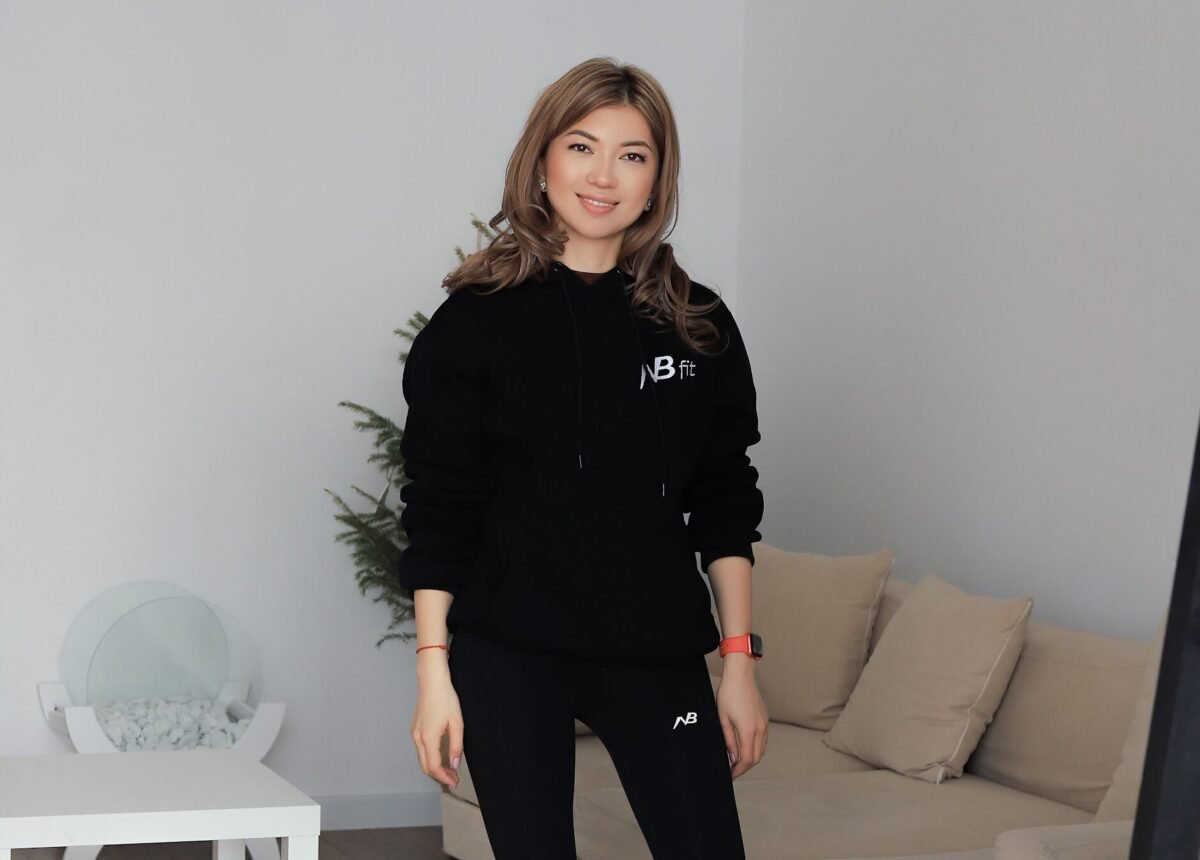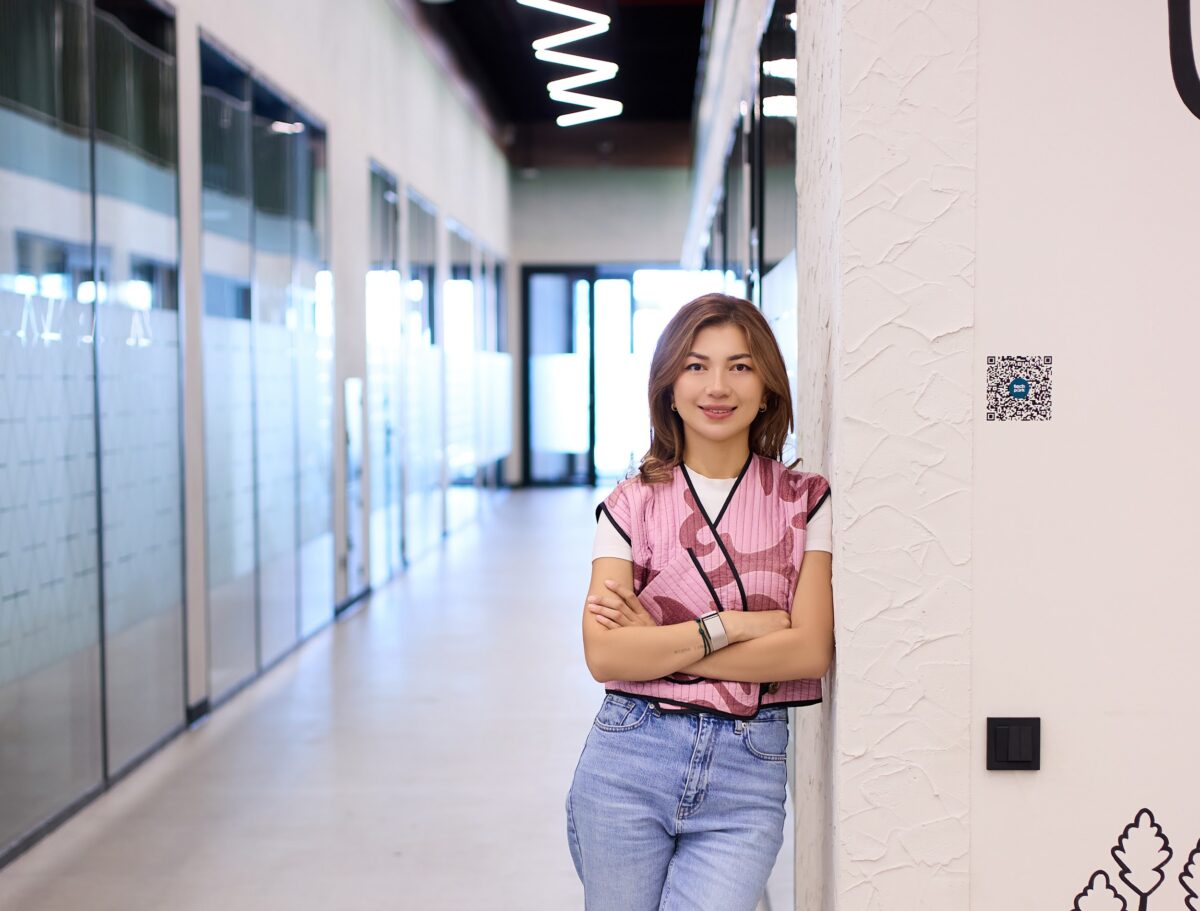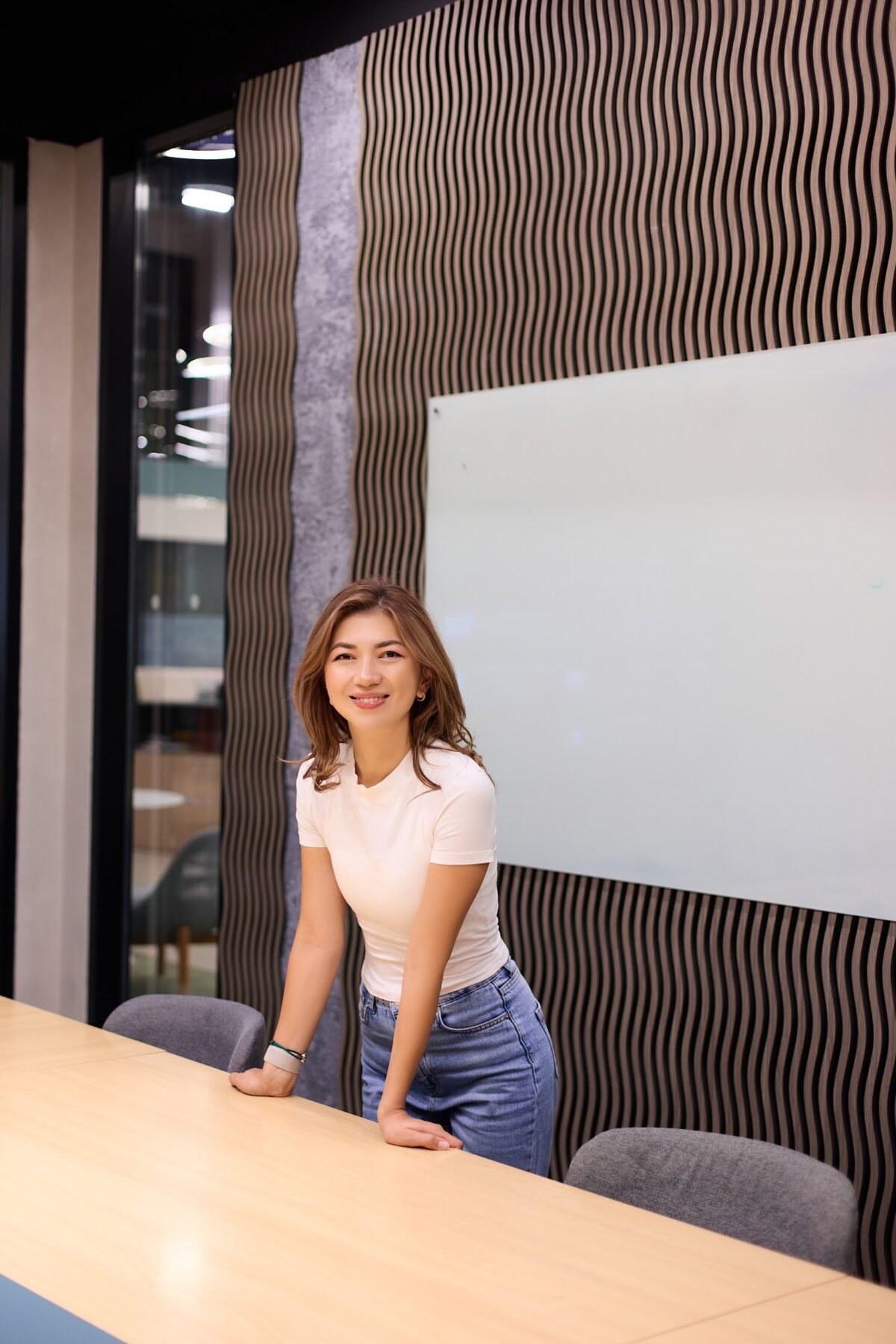Kyrgyzstani Entrepreneurs Found a Way to Help Women Recover After Childbirth, and Now Their Startup Is Valued at $7.8 Million

Syrga Tilekova is the CEO and co-founder of NB FIT. What started as an online fitness service has, five years later, grown into a full-scale platform focused on postpartum recovery for women. Today, the startup has 30,000 users from countries all around the world.
For the joint project by Digital Business and Astana Hub «100 Startup Stories of Central Asia» Syrga shares how NB FIT got its start, why it eventually stopped being profitable, and what sets it apart from other online fitness platforms. We also found out why the team turned down investment twice, how the co-founders navigate tough decisions together, and what’s next for the company.
«NB FIT offers over 300 workouts and more than 1,000 video tutorials»
– This year, NB FIT turns five. So, how did it all begin?
– During the coronavirus pandemic, the startup where I worked as a product marketing manager — and where my husband, Nyrgazy, was a product designer — shut down, and we both lost our jobs. Around that time, we met Nurilya Barpieva, who would later become our co-founder at NB FIT. She had already recorded some workouts and was selling them through social media, but she had a bigger vision: to scale the idea into a full online fitness platform.

We didn’t have deep experience with similar projects, but we decided to start testing our hypotheses. We quickly realized that people were willing to pay for online workouts, and that we had the potential to scale into other Russian-speaking countries. In May 2020, Nurgazy Ordobayev and Stanislav Kazantsev joined the team, and we began developing our MVP. Just a few weeks later, the prototype was ready.
– You started out focusing only on online workouts. What does NB FIT offer today?
– We’ve stayed true to our roots, and NB FIT still offers over 300 workouts. But now, users also get access to more than 1,000 video tutorials from psychologists, nutritionists, endocrinologists, and other experts in women’s health. Plus, they can book one-on-one consultations directly with specialists.
As artificial intelligence evolved, we introduced an AI consultant that answers questions related to women’s health. We only use chatbots that rely on trusted scientific data and proven methodologies.
But the real value lies in the community. We discovered that having a space to connect with like-minded people means a lot, especially for mothers on maternity leave, who often spend most of their time at home with their babies.
– Do you operate entirely online?
– We're also developing our offline presence in Bishkek. Right now, we have two fitness clubs operating under the NB FIT program. We collaborate with doctors, host offline conferences, and organize meetups with medical experts and specialists.
– How is NB FIT different from other services that offer online workouts?
– The first key difference is our systematic approach. We don’t overwhelm users. Instead, we guide them step by step until they start to enjoy the workouts and feel real improvements in their well-being.
We also promote a thoughtful and respectful approach to sensitive aspects of women’s health. Too often, women are judged or blamed for certain issues. That has no place in our work.
«The US is actually our second-largest user base»
– What challenges have you faced over the years?
– The project was profitable in the beginning, up until the point when we set some ambitious scaling goals. At the end of 2021, we decided to expand into the MENA region because we were already getting some traffic from there. We launched a test ad campaign targeting the UAE and Qatar and ran several customer development interviews. We invested quite a bit, but we didn’t manage to attract a large audience. We do have users from the UAE, just not as many as we have from the US.
– What do you think went wrong?
– We didn’t take localization into account and had very little understanding of how the fitness market and medical sphere work in that region. We saw that there was demand, but we hadn’t done enough analytics or research into the local context. In the end, we probably just wasted money, though we wouldn’t have known that without trying.

After that, we decided to test the US market. We started by testing hypotheses with our own money, even running at a deficit. Later, we began looking for investments and joining available research programs to secure a bigger budget for experimentation.
– And what came out of it in the end?
– Today, the US ranks second after Kyrgyzstan in terms of users. We’re active in several cities, with most of our subscribers coming from Chicago, Los Angeles, Austin, and New York.
– You’ve also started building B2B partnerships in the US. How are you approaching this?
– We collaborate with specialists who offer services indirectly connected to medicine — for example, breastfeeding experts or doulas who support expectant mothers during childbirth.
In the US, these services are very popular, but many of the specialists don’t yet have a well-structured approach. We’ve started onboarding them so they can consult users in chats, hold personal sessions, and earn through the platform.
There’s a similar base of specialists in Central Asia, but here young people often turn to older relatives, friends who have already given birth, or other experienced women for advice.
«Our MRR is steady now at $55,000»
– How has your client persona changed over the years?
– NB FIT still positions itself as a service for all women, but our audience can be divided into two main groups. The first group is women who are more than six months postpartum. By that time, most have adjusted to motherhood, overcome the initial challenges, and are ready to focus on their own health.
The second group is women with older children. Many of them either never worked out before or chose types of exercise that weren’t really suited to women’s health. In most cases, they face pelvic floor issues, and our programs are designed to address exactly that.
– So, where are you at today in terms of users?
– Right now, we have 30,000 users across Central Asia, the US, the UAE, and Europe, and our reach keeps expanding. Recently, we even started noticing payments coming in from China.
Of course, we’re best known in Kyrgyzstan. For instance, when I was pregnant, I went to a medical center, and no one there knew I was part of the project. At one point, I asked the doctor when I could start working out and which program would be best. The doctor immediately recommended NB FIT.
– Many people buy gym memberships but then lose motivation and stop going, which means both the coach and the gym lose out. How do you handle that challenge?
– We looked at the numbers and realized that most clients are active during the first three weeks. If they don’t see results in that time, they’re more likely to give up. To tackle this, we started building a stronger community and introduced supervisors within the service. These are long-term subscribers who really understand the NB FIT philosophy. From time to time, they reach out to other users to keep them motivated and engaged with the community.
– So, what’s your main source of revenue?
– We work on a subscription model, which we introduced in 2022. Back then it was something completely new for Central Asia, and many people didn’t really understand what they were being charged for, so we had to return their money. Over time, though, the audience got used to the format.
Today, we offer access for 30 days, three months, or one year. We’re planning to phase out the one-month option, since it’s usually too short for users to really feel the benefits of the app.
What’s especially encouraging is that some clients have been renewing their subscriptions for three years straight. Once they make it through the toughest stage — the first nine months — training becomes a habit, and they don’t fall back anymore.
– How much does the project earn these days?
– The project currently has a stable MRR of $55,000.
«We’ve come all this way, and we turned down investment twice»
– How much has been invested in the project altogether?
– We mainly built NB FIT using working capital. Over time, we raised about $60,000 from investors, but the last time we accepted any funding was back in 2022. In fact, two years ago, we made the decision to fully step away from outside investment. In 2023, I traveled to the US and met two business angels who were ready to invest around $100,000. We went through all the stages of negotiation but ultimately decided not to go through with the deal.
Then in 2024, we discussed another potential investment round, with the project valued at $7.8 million, but once again, we chose to turn it down.
– Why?
– We wanted to challenge ourselves to grow MRR independently. The investment funds we raised earlier were used up quite fast, so this time, we decided to take a more intentional and disciplined approach to building the project.

– What does the NB FIT team look like today, and how has it evolved over the last five years?
– Right now, we have a team of six to seven people, not counting the co-founders. At our peak, the team grew to around 30: we had developers, sales managers, and a production crew. But we realized that setup wasn’t financially sustainable. In the end, we scaled back and kept only the product marketing managers who are truly essential to the project.
– With four co-founders, how do you all manage to stay on the same page?
– Each of us has our own area of responsibility. For example, Nurilya handles the development of fitness programs and platform expansion. I’m in charge of marketing, investor relations, and team management. Nyrgazy takes care of finances, and Stanislav leads everything on the technical side.
So depending on the situation, the person responsible for that area makes the final call. We have full trust in each other and don’t question one another’s decisions.
– What’s next for NB FIT in the coming year?
– We’ll soon be making a decision about the future direction of the project. There are several possible paths for how it could develop. If we continue operating as a startup, we plan to test new ideas, introduce more tech-driven solutions, and possibly apply to international accelerator programs. In fact, in 2023–2024, we were selected to take part in a few international programs, but I had to turn down the opportunity because I had just given birth.
We’ll be also considering attracting investment and scaling internationally, including in the US. Right now, because of the specific structure of the medical system there, we don’t need to obtain many licenses or approvals, which allows us to grow more quickly.

When a startup starts generating revenue, you naturally become more cautious about taking risks. If we shift toward a more traditional business model, we’ll focus on integrating our online and offline services and improving the experience for our existing users. Most likely, we’ll localize and concentrate on just two key markets — Kyrgyzstan and the US.
At the same time, Nyrgazy and Stanislav are working on another startup called AIRUN, which helps other businesses go digital and automate their processes. I’ve also joined the project as a product marketing manager. We might shift our focus to AIRUN, and it’s possible that some of the co-founders will move on from NB FIT. We’ll see how things unfold.








